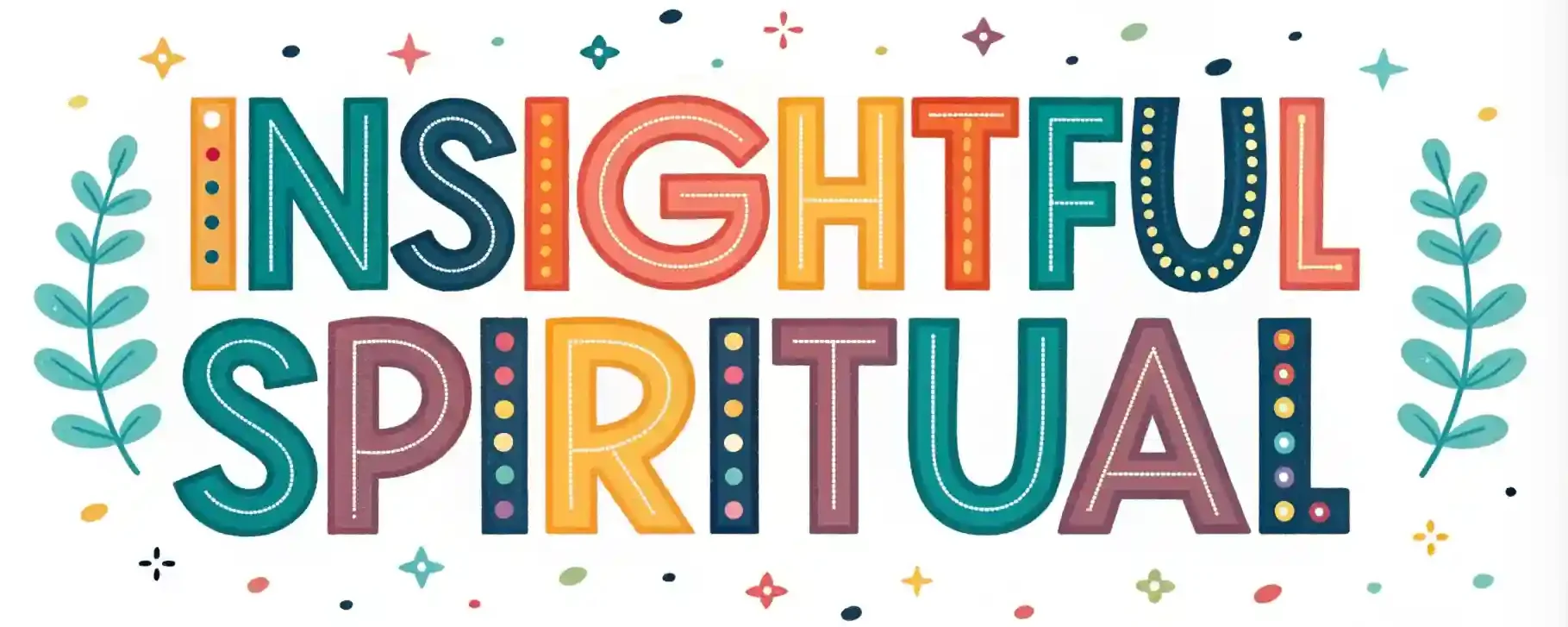6 Best Yoga Philosophy Books
Exploring yoga philosophy can deepen your practice and help you understand its core principles more clearly. With many books available, choosing the right ones can guide you through essential teachings, spiritual insights, and practical advice suitable for all levels. By focusing on thoughtfully selected titles, you can develop greater mindfulness and personal growth. Understanding what to look for in these books guarantees you gain valuable insights that support your journey, making it more meaningful and sustainable.
The Yoga Mind: 52 Principles of Yoga Philosophy
If you are just starting to learn about yoga philosophy or want an easy way to understand its main ideas, “The Yoga Mind: 52 Principles of Yoga Philosophy” is a good choice. This book explains the basic ideas of yoga that go beyond just doing poses. It talks about where yoga started, its main rules, and some of the deeper, spiritual parts of yoga. The book is simple, so beginners can understand it easily. It helps you see how yoga is more than just movement. You can read it quickly or use it daily to learn more about yoga’s real meaning. It’s a helpful guide to explore yoga at your own speed.
Best For: People new to yoga philosophy who want clear and simple ideas about yoga’s basics.
Pros:
- Easy-to-understand explanations make difficult ideas simple.
- Good for quick reference or daily reading.
- Well-organized for beginners and casual learners.
Cons:
- The content might be too simple for experienced yoga practitioners.
- Some readers think the tone is a little too informal or come across as condescending.
- It does not include practical advice for advanced yoga practice.
Core of the Yoga Sutras: The Definitive Guide to the Philosophy of Yoga
Core of the Yoga Sutras: The Definitive Guide to the Philosophy of Yoga is a good book for people who want to learn more about the ideas behind yoga. It is best for serious students, teachers, and scholars. The book gives clear explanations of yoga philosophy, using ideas from B.K.S. Iyengar’s many years of practice. It focuses on the main ideas of the Yoga Sutras, making difficult Sanskrit words easier to understand. Some parts may still be dense or tricky. The book is especially helpful if you already know some yoga or Sanskrit. As you read, you will see yoga from a deeper point of view. It can help you grow in your practice and your understanding of yoga.
Who it’s good for: People who want a detailed look at yoga ideas and the main points of the Yoga Sutras.
Pros:
- Offers clear explanations based on B.K.S. Iyengar’s experience.
- Makes hard Sanskrit words easier to understand.
- Re-reading the book can bring new ideas and help you learn more.
Cons:
- Can be hard to read for beginners or people new to Sanskrit or yoga ideas.
- The way the book is organized may not follow the original order of the sutras, which might make it harder to find specific parts.
- The book is sometimes hard to find or buy.
This book is best for those who already have some background in yoga or Sanskrit. It helps you get a deeper look at yoga’s spiritual and practical sides. It supports your growth in both practice and knowledge.
The Complete Book of Yoga: Karma Yoga, Bhakti Yoga, Raja Yoga, Jnana Yoga
This book helps you learn about the four main types of yoga: Karma, Bhakti, Raja, and Jnana. It brings together the teachings of Swami Vivekananda in a simple, easy-to-carry format. Each part of the book explains a path of yoga clearly, so you can understand it easily.
Karma Yoga shows how to do good actions without expecting anything in return. Bhakti Yoga helps you feel love for the divine through devotion. Raja Yoga teaches you how to control your mind and energy to find inner strength. Jnana Yoga helps you understand what is real and what is false, so you can realize the ultimate truth. Together, these paths show different ways to grow spiritually and improve your practice.
Best For: People who want an easy-to-understand guide to learn about the four main yoga paths. This book is perfect for those who like well-organized teachings by Swami Vivekananda.
Pros:
- It has a nice, attractive design with good-quality materials. This makes reading fun and the book durable.
- The explanations are clear and thorough. The book makes complex ideas easy to understand.
- It is small and portable, with features like a built-in bookmark. You can take it with you when you travel or study.
Cons:
- Some people had issues with slow or delayed delivery.
- The small size might not be comfortable for long reading sessions, even though the text is easy to read.
- The ideas in the book are deep. You might need to read it more than once to fully understand everything, which can be tough for beginners.
This book is a good choice if you want a simple, clear guide on the main paths of yoga. It helps you learn the ideas step by step and stay inspired on your spiritual journey.
The Yoga Sutras of Patanjali
The Yoga Sutras of Patanjali is a great book for people who want to learn more about yoga ideas and self-awareness. Many readers find this book useful for spiritual growth, especially if you want to go beyond just doing yoga poses. It is good for both beginners and experienced yogis. The language is clear, and it gives helpful insights into controlling your mind, finding yourself, and feeling peaceful inside. Some parts might feel hard at first, but reading it again can help you understand better. This book shares timeless ideas and practical tips that can guide you on your personal journey. It is a highly recommended read for anyone interested in discovering more about themselves through yoga.
Best For: People who want to understand yoga philosophy, improve self-awareness, and grow spiritually with simple yet deep teachings.
Pros:
- Clear explanations that suit beginners and experienced students.
- Helps you grow personally, think clearly, and stay disciplined with practical advice.
- Known for its straightforward language and trustworthy translation, making difficult ideas easier to understand.
Cons:
- Some parts may be hard to understand at first.
- It focuses a lot on spiritual and philosophical ideas, so it might not be for someone who only wants physical yoga poses.
- It takes time to read and understand fully, so you may need to read it more than once.
The Secret Power of Yoga: A Woman’s Guide to the Heart and Spirit of the Yoga Sutras
If you want a yoga book that helps you understand the Yoga Sutras in a simple and real way, “The Secret Power of Yoga” might be a good choice. The author, Nischala Devi, uses stories from everyday life to explain old ideas. This makes the teachings easier to understand and more meaningful today. The book focuses on the power of words and positive language. It shows how your words and thoughts can help you connect with your inner self. It also talks about the differences between female and male qualities. The book promotes equality and encourages a warm, welcoming way to practice yoga. Many readers find it inspiring. It works well for beginners and people who already practice yoga.
Best For: People who want a simple, honest look at the Yoga Sutras from a woman’s point of view. It emphasizes positive words and real-life examples.
Pros:
- Explains the Yoga Sutras in a fresh, easy way using stories and practical ideas
- Focuses on the importance of kind words, positivity, and inner kindness, making yoga teachings easy to approach
- Offers a female perspective that challenges stereotypes and promotes understanding between genders
Cons:
- Doesn’t include detailed Sanskrit translations or deep analysis of the original Sutras
- Some readers may want more depth or more detailed philosophical explanations
- The print quality of the book is sometimes seen as poor or basic
This book makes the ideas of yoga easy to understand and friendly. It helps you see how the teachings can be part of your everyday life. If you want a warm, inspiring guide to the Yoga Sutras that feels relatable, this book could be just right for you.
The Truth of Yoga: A Comprehensive Guide
Are you curious about the deeper ideas behind yoga? “The Truth of Yoga: A Thorough Guide” helps you learn about the history, philosophy, and practices of yoga. This book is good if you want to go beyond just the exercises you do on the mat. It shows how yoga has changed over thousands of years. It explains important texts, different styles, and key beliefs. The book is written in a friendly, easy way so it’s simple to understand. Short chapters make it easy to learn step by step. It sparks your curiosity and helps you understand yoga’s roots without feeling confusing.
Best for: People who want a clear, easy introduction to yoga’s history, ideas, and practice. It’s perfect if you want to learn more about where yoga comes from and what it means.
Pros:
- Explains tough ideas in a simple way that’s easy to follow.
- Short chapters make learning easy and fun.
- Covers the history, traditions, and important texts of yoga, so you can keep exploring further.
Cons:
- It does not include much about Bhakti yoga, like devotional practices and texts.
- Focuses more on the history and ideas, and less on practical yoga tips for everyday use.
- The big picture approach might not go deep enough if you want to study specific yoga styles or techniques.
This book is a good choice if you want to learn about yoga’s background and philosophy in a way that’s clear and friendly. It helps you understand the ideas behind yoga, so you can grow your knowledge and appreciate its deeper meaning.
Factors to Consider When Choosing Yoga Philosophy Books for Deeper Understanding
When choosing yoga philosophy books, it’s important to take into account several key factors to deepen your understanding. You should look for books based on authentic sources and accurate translations, as these ensure reliable information. Additionally, paying attention to the author’s expertise, the book’s complexity, and whether it offers practical insights can help you find a resource that fits your needs comfortably.
Authentic Sources and Translations
Choosing good yoga philosophy books starts with picking sources that are real and trustworthy. Look for translations made or approved by people who know the tradition well. Find editions that include the original Sanskrit words and easy-to-understand comments. This helps you learn what the words truly mean. Make sure the translation explains important Sanskrit terms like “Karma,” “Bhakti,” or “Maya,” so you understand their real meaning. Avoid translations that seem to be changed too much by someone’s personal ideas. Instead, pick ones that stick close to the original texts. Reading several good translations can also help you see different ways of understanding the same teachings. This way, your study stays true, clear, and helpful.
Author Expertise and Credentials
When choosing a yoga philosophy book, look at who wrote it. Find out if the author has proper training. This means they might have certifications from well-known yoga schools or degrees in philosophy or religion. Also check if they have spent many years practicing yoga or teaching it. This experience can help them explain things better. See if the author has done research or written other good books. It’s helpful if they know Sanskrit or understand yoga’s cultural background, so their ideas are accurate. When the author has these credentials, you can trust that their book will give helpful and honest insights. This can help you learn more about yoga and deepen your practice.
Complexity Level and Readability
Have you ever thought about how the difficulty of a yoga book affects your understanding? If a book is too hard, you might get confused or frustrated. This can make learning tough. But if the book is too simple, you might miss important ideas or get bored. To learn best, look for books that use clear and simple words. Books that explain ideas in an easy way can make learning fun and easy. Also, think about what you want from the book. Do you want quick ideas or detailed explanations? Pay attention to how the book feels and sounds. Books that are very formal or hard to read can make it harder to understand. A friendly, casual tone can help you focus and learn better.
Practical Application Focus
When you want to learn about yoga philosophy, it helps to find books that show you how to use what you learn. Look for books that don’t just talk about ideas but also give you steps to practice. Choose books that have exercises or questions you can do. These help you put the teachings into your everyday life. It’s good if the book shows how old ideas connect to today’s world. That makes it easier to understand how to use them now. Also, books with stories or real-life examples show how these ideas can solve common problems. Look for a mix of deep thoughts and practical tips. This way, you can learn more and also see how to make your life better with yoga philosophy.
Cultural and Contextual Relevance
When choosing a yoga book, pick one that matches your culture or your life. This makes it easier to understand and connect with the ideas in the book. Think about whether the book talks about yoga’s history and tradition, or if it shows a modern view that feels right for you. The words the author uses are also important. A book that explains ideas with words you know helps you learn better. Look at where the author comes from. Their background can change how they see yoga, and that can help you understand different views. Reading books from different cultures or traditions can give you a wider view of yoga. By thinking about these things, you can find books that speak to you and help you on your yoga path.
Depth of Philosophical Content
Choosing a yoga book with deep philosophy helps you learn more about yoga’s ideas. Look for books that go into detail about the main concepts. Instead of quick summaries, find books that explain things clearly. Check if the book talks about important texts like the Yoga Sutras or the Bhagavad Gita. These texts give original ideas about yoga. If you want a more spiritual experience, see if the book covers special teachings or ideas about the mind and spirit. Good books might use Sanskrit words or take a scholarly approach, which shows they go beyond basics. Also, see if the book mentions original sources or suggests other reading. These points help you pick a book that will expand your understanding and make you think deeply about yoga’s ideas.
Illustrations and Supporting Material
Illustrations and supporting materials are very helpful when you read about yoga philosophy. Pictures like diagrams, charts, and infographics make tough ideas easier to understand. They help you remember what you learn. Many illustrations use traditional symbols and images. These add cultural and spiritual meaning to the material. Visuals can also turn hard topics, like chakras or meditation steps, into things you can learn more easily. This is especially helpful if you are new to yoga or if you learn best with pictures. Good-quality photos of yoga poses, ancient artifacts, or scenes from old texts create a more real and engaging experience. They help you feel more connected to the material. When you pick a book, check how the pictures help explain things. Good visuals make understanding clearer, help you remember better, and make learning more fun on your yoga journey.
Price and Accessibility
When you pick a yoga philosophy book, think about the price and how easy it is to find. Choose books that fit your budget so you can buy and read them without worry. Look for different formats like print, e-books, or audiobooks. This gives you more ways to access the book wherever you are. Check if the book is available at many stores or libraries. This can help you save money and find it easily. Also, pick a book that matches your reading level. Short and simple guides are good for beginners. Make sure the language in the book is clear and easy to understand. These tips help you find a book that you can read often and learn from easily.

Hi, I’m Aurelia Starfrost, your spiritual guide at InsightfulSpiritual.com. I love exploring ancient wisdom and modern practices to help you on your journey. With a focus on meditation and energy healing, I’m here to guide you to find solace within and discover your spiritual essence.


